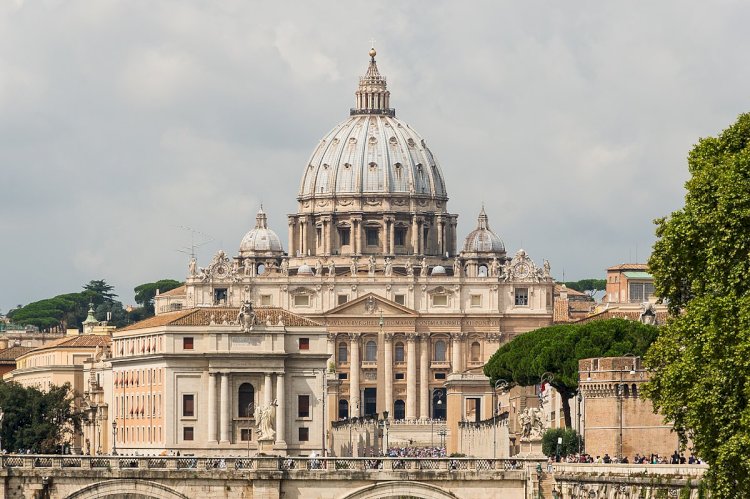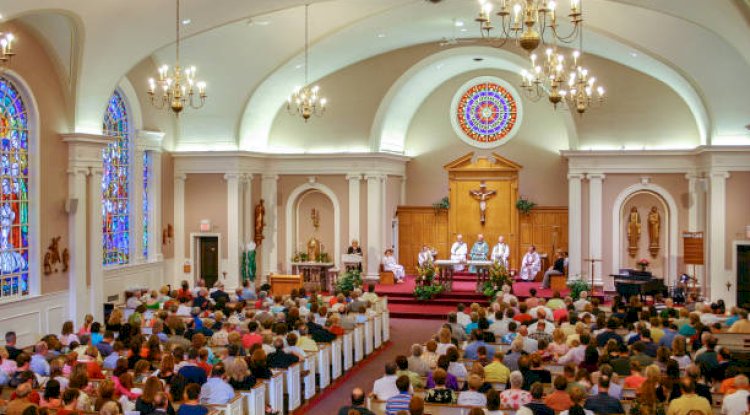"The Air That We Breathe is Anti-Catholic"

“The anti-Catholic tradition could not be kept alive, would die of exhaustion, without a continual supply of fable.” - St. John Henry Newman
Nearly a century ago, the Catholic author, historian, and politician Hilaire Belloc (1870-1953) wrote an intriguing examination of the Church and the modern world in his 1929 book Survivals and New Arrivals. Belloc was gravely concerned that the English Catholics of his time were not aware fully of the anti-Catholic situation in their homeland. He wanted his fellow Catholics to recognize “that the air we breathe is anti-Catholic; that the history we are taught, the moral ideas behind the legal system we obey, the restrictions imposed on us, the political conceptions embodied in every public act, the general attitude toward foreign countries” were the product of a Protestant perspective embodied in the English nation.

Belloc believed that an assessment of the enemies of the Church was warranted so that defenders of the Faith could mount a proper Catholic defense in the future. He stressed that Catholics should investigate which opponents at the time were in a weakened state, which ones were in full potency, and what new adversaries would arise. He categorized these attacks into survivals, the main opposition, and new arrivals.
Belloc defined survivals as the old forms of attack that were weakening and not sustainable into the future—among them “the historical attack,” which sought to discredit the Catholic faith through disproving from history certain claims of the Church. Critics utilizing this attack accomplished that goal by two methods: “proving” not that a doctrine, teaching, practice, or tradition of the Church was false, but rather that it formed no part of the original Apostolic Church (e.g., the role and authority of the papacy), and proving that some claim or custom was false (e.g., the presence of one relic of the same saint in different locations). This second approach focused on disproving traditions and legends associated with the Faith, which would, the critics hoped, lessen acceptance of the truths of the Church.
Belloc noticed that the Church remained on the defensive for centuries concerning the historical attack. It took several centuries of sustained Protestant attacks against the history of the Church for its defenders to effectively launch a counter, but, as Belloc noted, serious Catholic and non-Catholic scholars had joined the fray and mounted a bold defense of the Church’s history. This fact convinced Belloc that the “historical attack” was a “survival” and that the future would reveal the disappearance of critics utilizing this form of assault against the Church.
Sadly, Belloc’s prediction proved incorrect, as modern-day historians with an animus against the Church pursued a relentless campaign of canceling historical Catholics. This attack is widespread and pernicious due to the arrival of the internet and modern means of communication, especially social media, which allow anyone with an opinion on any subject to proclaim it boldly, broadly, and boastfully. Enemies of the Church have greatly multiplied in the modern world and are effectively utilizing the historical attack in its Enlightenment, secular, Protestant, and “Catholic” forms to cancel individual Catholics of the past to discredit the Church and weaken its influence in society. Pope Francis lamented this situation in his “Letter on the Renewal of the Study of Church History” (November 21, 2024) when he wrote, “Nowadays we are flooded with ‘memories,’ often false, artificial, and even mendacious,” and “a tendency to dismiss the memory of the past or to invent one suited to the requirements of dominant ideologies.”
Amid the historical attacks against the Church and her past members, Catholics today are oftentimes bewildered and unsure how to respond. Catholics are susceptible to two erroneous responses to these anti-Catholic historical criticisms: an unflinching and uncritical triumphalism that highlights the good and ignores the bad of Church history and the “ostrich” approach of ignoring the controversy at best and implicitly accepting the false historical narrative at worst.
The Catholic defender of Church history must fight these extreme positions and seek the historical truth through knowledge; understanding the context of historical events; and recognizing that people in the past were men and women endowed with free will, which was sometimes exercised virtuously and sometimes not. Defense of Catholic personages and historical events from the cancel culture of the present does not indicate complete acceptance of past persons or actions, but instead seeks authentic understanding so that controversial persons and events can be explained (but not necessarily justified).
The authentic story of Catholic historical figures must be taught and learned boldly, unequivocally, truthfully, and from a Catholic perspective, so that the Church they loved, served, and sometimes died for can fight the forces of evil and darkness and restore all things in Christ.
What's Your Reaction?














